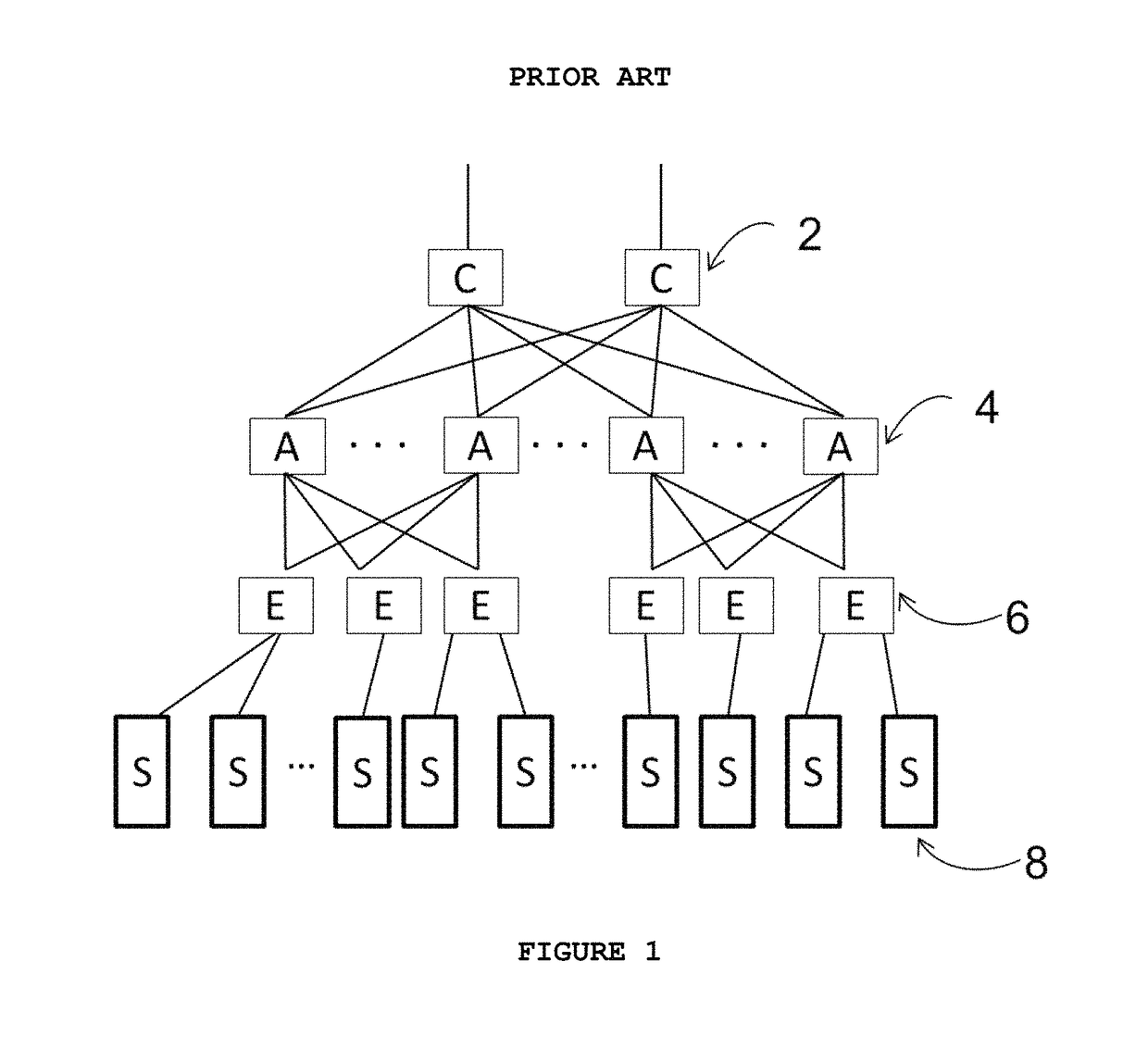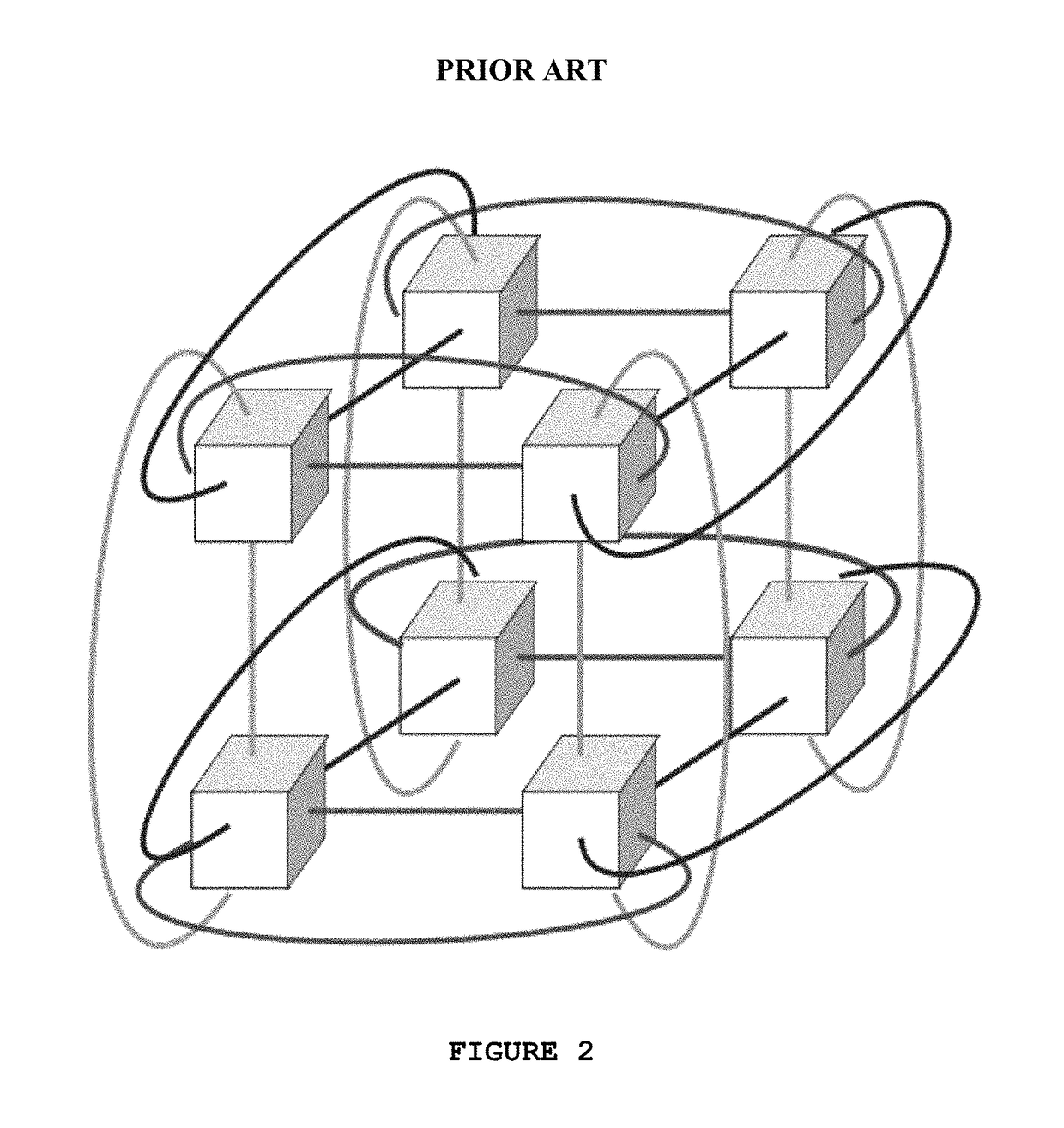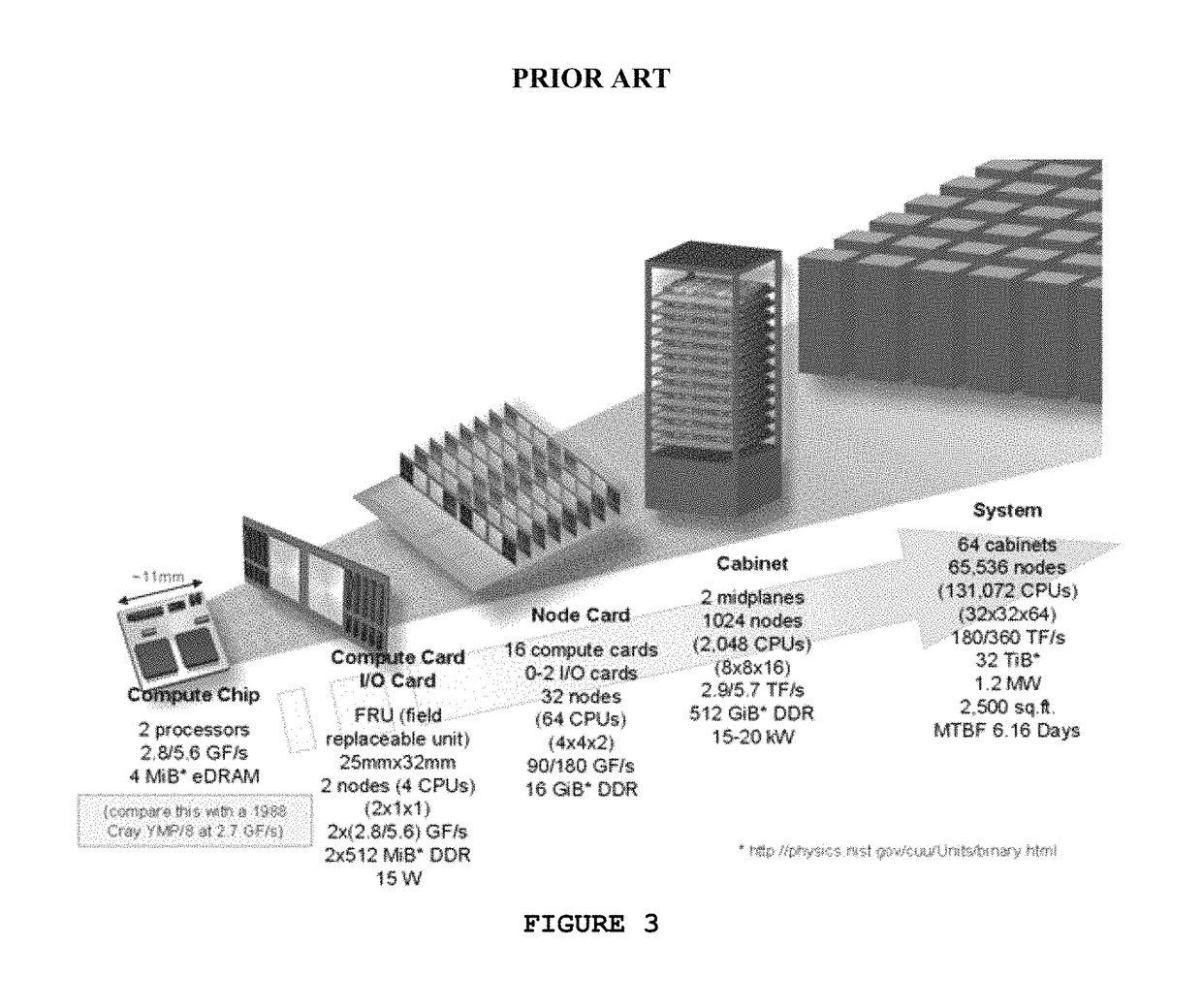Method to route packets in a distributed direct interconnect network
a direct interconnection and network technology, applied in data switching networks, digital transmission, electrical equipment, etc., can solve the problems of adding complexity, affecting the service life of the network, and the method has significant limitations in addressing the challenges of the future cdc, so as to avoid hot spot and deadlock, reduce latency, and increase throughput
- Summary
- Abstract
- Description
- Claims
- Application Information
AI Technical Summary
Benefits of technology
Problems solved by technology
Method used
Image
Examples
Embodiment Construction
[0048]The present invention utilizes a torus mesh or higher radix wiring to implement direct interconnect switching for data center applications. In particular, the present invention is particularly useful with the torus system described in related PCT Patent application no. PCT / CA2014 / 000652 entitled, “Method and Apparatus to Manage the Direct Interconnect Switch Wiring and Growth in Computer Networks”, filed Aug. 29, 2014, the disclosure of which is incorporated herein by reference. Such architecture can provide a high performance network interconnect having tens of thousands of servers in a single switching domain.
[0049]The software that controls the switch follows the Software Defined Networks model. The switch control plane (Switch OS) preferably runs on a separate server but interacts closely with the distributed processing running on each PCIe card. With reference to FIG. 11, key software components include the Topology Discovery (TD), the packet Routing (SR) across the topol...
PUM
 Login to View More
Login to View More Abstract
Description
Claims
Application Information
 Login to View More
Login to View More - R&D
- Intellectual Property
- Life Sciences
- Materials
- Tech Scout
- Unparalleled Data Quality
- Higher Quality Content
- 60% Fewer Hallucinations
Browse by: Latest US Patents, China's latest patents, Technical Efficacy Thesaurus, Application Domain, Technology Topic, Popular Technical Reports.
© 2025 PatSnap. All rights reserved.Legal|Privacy policy|Modern Slavery Act Transparency Statement|Sitemap|About US| Contact US: help@patsnap.com



